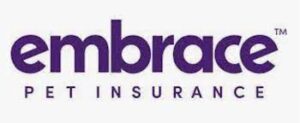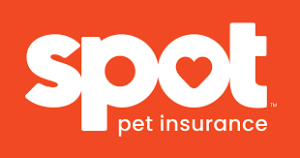Pet insurance
 Pet Insurance: A Comprehensive Guide for Pet Owners
Pet Insurance: A Comprehensive Guide for Pet Owners
Hello, pet owners! As Blake, the owner of Blake Insurance Group, I’m here to guide you through pet insurance. Like us, our furry, feathered, or scaled friends can encounter health issues requiring medical attention. Pet insurance can help manage these costs, ensuring your pet gets the care they need without breaking the bank.
What is Pet Insurance?
Pet insurance is a policy purchased by a pet owner to offset the overall cost of their animal’s medical bills. It’s similar to human health insurance, with deductibles, premiums, and coverage limits. It can cover a portion of your pet’s veterinary bills, helping to lessen the financial burden of unexpected health issues.
Types of Pets Covered
While dogs and cats are the most commonly insured pets, some providers also offer coverage for more exotic animals. These include birds, reptiles, amphibians, ferrets, guinea pigs, hedgehogs, mice, mini goats, potbellied pigs, and rabbits. However, coverage for these animals is less common and may be offered by fewer providers.
Rising Veterinary Costs
We don’t need to tell you that your fur baby is priceless, but let’s talk numbers. According to a CNBC report, vet costs have been climbing at two times the rate of inflation. Now, that’s a lot of kibble!
Financial Preparedness for Unexpected Pet Illnesses or Injuries
Like the great doggie philosopher, Bone-rates (not a real philosopher) probably would have said, “Expect the unexpected.” Being prepared is not just for boy scouts; it’s for smart pet parents.
Coverage Options
Pet insurance policies typically fall into three main categories:
**Accident-Only**: This policy covers veterinary care for accidents, such as falling injuries or swallowing a foreign object.
**Accident and Illness**: This coverage includes care for accidents and a wide range of illnesses, from minor conditions like ear infections to severe diseases like cancer.
**Wellness Coverage**: This is usually an add-on to the accident and illness policy, covering routine care such as vaccinations, flea and tick prevention, and regular check-ups.
Each policy has its terms and conditions, including exclusions for specific conditions or procedures. For example, most pet insurance policies do not cover pre-existing conditions. It’s crucial to read the fine print and understand what is and isn’t covered before purchasing a policy.
Choosing the Right Plan
The best pet insurance plan for you depends on your pet’s species, breed, age, and health, as well as your financial situation and personal comfort with risk. Here are a few factors to consider:
– **Coverage**: Ensure the policy covers the types of health issues your pet will likely encounter. For example, some breeds are prone to specific health conditions the policy should cover.
– **Cost**: Premiums vary based on coverage level, pet breed and age, and location. Make sure the cost of the policy fits within your budget.
– **Provider Reputation**: Look for a provider with a strong reputation for customer service and timely claims reimbursement.
– **Policy Terms**: Understand the policy’s terms, including the deductible, the reimbursement level, and the annual maximum payout. Also, check for any waiting periods before coverage begins.
Exclusions and Pre-existing Conditions
Pet insurance policies often have a range of exclusions, specific areas, or conditions the insurance does not cover. These exclusions can vary depending on the specific provider and policy. Some of the most common exclusions in pet insurance include:
**Pre-existing conditions**: These are injuries or illnesses your pet had or showed signs of having before the policy started. This also applies when you cancel one policy and take out another. However, some insurance companies may provide coverage for a condition if it’s curable, cured, and free of symptoms and treatments for a certain period, such as 180 days.
**Routine and preventative health care**: Vaccinations, flea and worm treatment, neutering, and dental treatment. These are typically covered under wellness coverage, a separate type of pet insurance coverage.
**Cosmetic or elective surgeries**: These include procedures like tail docking, ear cropping, skin fold removal, anal gland expression or removal, dewclaw removal, and feline declawing.
**Grooming procedures**: These include services such as nail trimming, ear cleanings, and medicated baths.
**Administration costs**: These are the costs the insurance company charges to complete an insurance form, check it to confirm the customer’s details and patient’s medical records, and get a vet to sign it. They are rarely covered by pet insurance.
**Age restrictions**: Some policies may not cover either too young or too old pets.
Pre-existing conditions are a significant area of concern in pet insurance. They are defined as any medical condition your pet has shown signs of or been diagnosed with before the insurance policy’s effective date. Most pet insurance plans do not cover pre-existing conditions, but exceptions exist. For example, some companies cover congenital and hereditary conditions if your pet hasn’t shown signs or has been diagnosed with one before coverage starts.
However, the presence of a pre-existing condition merely means that the insurer may not reimburse you for any treatments directed toward that specific ailment. You may still opt to seek treatment for that condition and be compensated for treatments for other conditions affecting your pet.
It’s essential to read the policy carefully to understand what is and isn’t covered and to review the list of exclusions before signing the contract.
Cost of Pet Insurance
Several factors influence the cost of pet insurance:
**Species**: The type of pet you have can significantly impact the insurance cost. Dogs are typically more expensive to insure than cats due to their unique medical issues.
**Breed**: Certain breeds of dogs or cats are known to have more health problems than others, which can increase the cost of insurance.
**Age**: Older pets are more prone to health issues, making their care more expensive. Therefore, the older your pet is, the more you’ll likely have to pay for insurance.
**Location**: The cost of veterinary care varies by location, which can impact the cost of your pet insurance policy. For example, pet insurance premiums are generally higher in areas where veterinary fees are higher.
**Coverage Selected**: The type of coverage you choose, such as essential protection, comprehensive, and wellness care, can dictate pet health insurance prices. For instance, pet insurance costs for dogs average $331.10 per year if you choose a low coverage limit worth $5,000, but this average rate increases to $607.71 per year if you choose an average coverage limit worth $10,000.
**Deductible**: The deductible you choose for your policy can also affect your premiums. Higher deductibles usually result in lower premiums.
**Reimbursement**: The level of reimbursement you choose can also impact your premiums. Higher reimbursement levels typically result in higher premiums.
**Size**: The size of a pet directly influences the cost of pet insurance. Larger breeds tend to have higher premiums than smaller breeds because they are generally more susceptible to specific health issues and require more medical attention.
**Genetic Predispositions**: Different breeds have varying genetic predispositions to certain health problems. Purebred pets often have specific genetic traits that can make them more susceptible to hereditary conditions, which can increase insurance costs.
Remember, the cost of pet insurance can vary widely based on these factors, so it’s important to get quotes from multiple providers to ensure you’re getting the best coverage for your pet at the most affordable price.
Pet Insurance Cost Comparison
| Insurance Company | Monthly Cost | Annual Cost |
|---|---|---|
| Embrace Pet Insurance | $30 - $40 | $360 - $480 |
| Figo Pet Insurance | $35 - $45 | $420 - $540 |
| Pets Best Pet Insurance | $29 - $41 | $312 - $492 |
| MetLife Pet Insurance | $30 - $40 | $360 - $480 |
| Nationwide Pet Insurance | $34 - $45 | $408 - $540 |
| Spot Pet Insurance | $30 - $40 | $360 - $480 |
| Trupanion Pet Insurance | $29 - $38 | $360 - $456 |
| Healthy Paws Pet Insurance | $30 - $40 | $360 - $480 |
Pet Insurance for Dogs
Dog owners have several coverage options to consider when looking for pet insurance. The most common type of pet insurance plan covers accidents and illnesses, including treatments for injuries, urinary tract infections, and other health issues.
Some policies also cover hereditary conditions, such as hip dysplasia and eye disorders, as well as alternative therapies for covered conditions like hydrotherapy, acupuncture, and stem cell treatments. Additionally, some plans include coverage for behavioral issues like fur pulling, destructive chewing, and excessive barking.
When choosing a pet insurance plan for your dog, consider factors such as breed-specific health risks, coverage for accidents and illnesses, and the cost of premiums. It’s essential to understand the policy’s terms, including exclusions for pre-existing conditions, age limitations, and waiting periods.
Pet Insurance for Cats
Cat owners should consider similar factors when selecting pet insurance. Most pet insurance plans cover accidents and illnesses and treatments for common cat health issues like swallowed objects and abscesses. Some providers offer wellness plans that cover preventive care, including vaccinations and diagnostics.
When choosing a cat insurance plan, consider your cat’s breed and health risks and compare policies from multiple providers to find the best coverage for your needs. Be sure to understand the policy’s terms, including exclusions for pre-existing conditions, age limitations, and waiting periods.
Pet Insurance for Exotic Pets
Exotic pet insurance is less common and typically offered by fewer providers, such as Nationwide. Coverage options for exotic pets, including birds, reptiles, and small mammals, can vary depending on the specific provider and policy. Exotic pet insurance from Nationwide covers veterinary expenses for accidents, illnesses, and various veterinary services.
Exotic pet insurance does not usually cover routine care, but you may be able to find a wellness plan for routine care for exotic pets as a standalone product. When choosing an exotic pet insurance plan, consider your pet’s species, age, location, and the amount of coverage you select. It’s essential to understand the policy’s terms, including exclusions for pre-existing conditions, age limitations, and waiting periods.
Claim Process
The process of submitting a claim and receiving reimbursement for eligible vet bills typically involves the following steps:
**Pay the veterinarian bill**: After your pet receives treatment, pay the veterinarian bill as usual.
**Complete a pet insurance claim form**: Fill out the required claim form provided by your pet insurance company. This form usually includes information about the treatment, diagnosis, and the cost of the services provided.
**Submit the claim and supporting documentation**: Submit the completed claim form and any required documentation, such as itemized invoices and medical records, to your pet insurance provider. You can usually submit claims online via a mobile app, email, fax, or regular mail.
**Wait for claim processing**: Your pet insurance provider will review your claim and determine if the expenses are eligible for reimbursement based on your policy’s terms and conditions. The processing time can vary, but most providers aim to process claims within a few business days.
**Receive reimbursement**: Once your claim is approved, you will receive reimbursement for eligible expenses through direct deposit or a check. The reimbursement amount depends on your policy’s terms, including the deductible, reimbursement rate, and coverage limits.
Understanding your policy’s terms and conditions, including any waiting periods, exclusions, and coverage limits, is essential to ensure a smooth claim process. If you have any questions or concerns about your claim, don’t hesitate to contact your pet insurance provider for assistance.
Choosing a Pet Insurance Provider
Selecting the right pet insurance provider involves researching coverage details, customer satisfaction, and claim processing times. Here are some tips to help you choose the best provider for your pet:
**Assess your pet’s needs**: Consider your pet’s breed-specific health risks and personal preferences when selecting coverage options.
**Research pet insurance companies**: Look for providers with a strong reputation for customer service, timely reimbursement of claims, and a history of stability in the industry.
**Compare pet insurance quotes**: Get quotes from multiple providers to find the best coverage for your pet at the most affordable price.
**Coverage and price**: Balance coverage with price, remembering that the lowest cost plan may not be the best option if it doesn’t provide the coverage your pet needs.
**Experience and stability**: Choose a provider with a proven track record in pet insurance and one that will be there for you over the life of your pet.
**Read the fine print**: Review the policy’s terms and conditions, including exclusions, waiting periods, and coverage limits, to ensure no surprises later.
**Customer service**: Look for a provider with good customer service, including hours of operation, contact options, and the availability of customer service representatives.
**Claim processing times**: Consider the provider’s average claim processing time, as this can impact how quickly you receive reimbursement for eligible expenses.
By following these tips and comparing policies from multiple providers, you can find the best pet insurance provider for your pet’s needs.
Top Pet Insurance Providers
 Embrace Pet Insurance
Embrace Pet Insurance
Embrace is a pet insurance provider that offers multiple ways to save on your policy, including multi-pet discounts and a diminishing deductible feature. They provide comprehensive coverage for accidents and illnesses, ensuring a wide range of health issues are covered.
Some of Embrace’s policies also cover hereditary conditions and alternative therapies, such as acupuncture and physiotherapy, which other providers do not always cover. This combination of cost-saving features, comprehensive coverage, and inclusion of hereditary conditions and alternative therapies makes Embrace a versatile choice for pet insurance.
 Figo Pet Insurance
Figo Pet Insurance
Figo is a pet insurance provider that differentiates itself with a mobile app, allowing pet owners to conveniently manage their pet’s insurance and health information from their devices. This feature can simplify filing claims and tracking your pet’s health records.
Figo offers comprehensive coverage, including accidents, illnesses, and hereditary conditions, depending on the plan chosen. They also provide various plan options, enabling pet owners to select the coverage level that best suits their pet’s needs and budget. This blend of digital convenience, comprehensive coverage, and plan flexibility makes Figo a compelling choice for pet insurance.
 Pets Best Pets Insurance
Pets Best Pets Insurance
Pets Best is a pet insurance provider known for its flexible plans that cater to various needs and budgets. They offer comprehensive coverage for accidents and illnesses, ensuring a wide range of health issues are covered.
One of the standout features of Pets Best is its reputation for timely claim processing, which means pet owners can expect to receive reimbursements quickly after submitting a claim. This combination of flexibility, comprehensive coverage, and efficient claim processing makes Pets Best a reliable choice for pet insurance.
 MetLife Pet Insurance
MetLife Pet Insurance
MetLife is a pet insurance provider that offers a variety of potential discounts, making it an attractive option for budget-conscious pet owners. These discounts can help reduce the cost of premiums, making pet insurance more affordable. MetLife provides comprehensive coverage, including accidents, illnesses, and wellness care, depending on the plan chosen.
With a strong reputation in the insurance industry, MetLife is known for its reliability and customer service. This combination of affordability, comprehensive coverage, and a strong industry reputation makes MetLife a solid choice for pet insurance.
 Nationwide Pet Insurance
Nationwide Pet Insurance
Nationwide stands out in the pet insurance industry for its coverage of dogs, cats, and exotic pets, including birds, reptiles, and small mammals. This makes it a go-to choice for owners of less common pets. Nationwide offers comprehensive coverage encompassing various health issues and treatments.
Additionally, Nationwide provides the convenience of bundling pet insurance with other insurance products, potentially simplifying the management and payment of multiple insurance policies. This combination of broad coverage and flexibility makes Nationwide a versatile choice for many pet owners.
 Spot Pet Insurance
Spot Pet Insurance
Spot is a pet insurance provider known for its broad coverage options and flexible plans. They cover various issues, including accidents, illnesses, and behavioral problems, ensuring your pet is protected in various scenarios.
Spot’s plans are customizable, allowing you to choose the deductible, reimbursement percentage, and annual limit that best fit your budget and your pet’s needs. This flexibility makes Spot a good choice for pet owners looking for comprehensive coverage tailored to their requirements and financial situation.
 Trupanion Pet Insurance
Trupanion Pet Insurance
Trupanion is a pet insurance provider that offers comprehensive coverage for pets with chronic conditions. They do not impose payout limits, which can benefit pets with recurring health issues requiring ongoing treatment. However, it’s important to note that Trupanion does not cover pre-existing conditions like other pet insurance providers.
Therefore, enrolling your pet while they are young and healthy is recommended to avoid issues with pre-existing conditions. Trupanion’s coverage is based on actual veterinary costs, covering everything from diagnostic testing to hospitalizations. This makes it a good choice for pets with chronic conditions, as it can save pet owners significant amounts of money over time.
 Healthy Paws Pet Insurance
Healthy Paws Pet Insurance
Healthy Paws is a pet insurance provider that offers comprehensive coverage without any caps on how much it will pay per incident, annually, or over the lifetime of your pet. This means that if your pet needs treatment for a new accident or illness, your pet’s veterinary bills will be eligible for coverage, subject to the policy’s terms and conditions.
The coverage includes emergencies, hereditary or congenital, cancer, and chronic conditions. Customers rated Healthy Paws highly for its simple and easy-to-understand plan, quick reimbursement process, and excellent customer service.
When choosing a pet insurance provider, you must consider your pet’s specific needs, the cost of premiums, the amount of coverage offered, the waiting period for preexisting conditions, and the reimbursement percentage for veterinary care. Getting quotes from multiple providers is also recommended to find the best coverage for your pet at the most affordable price.


